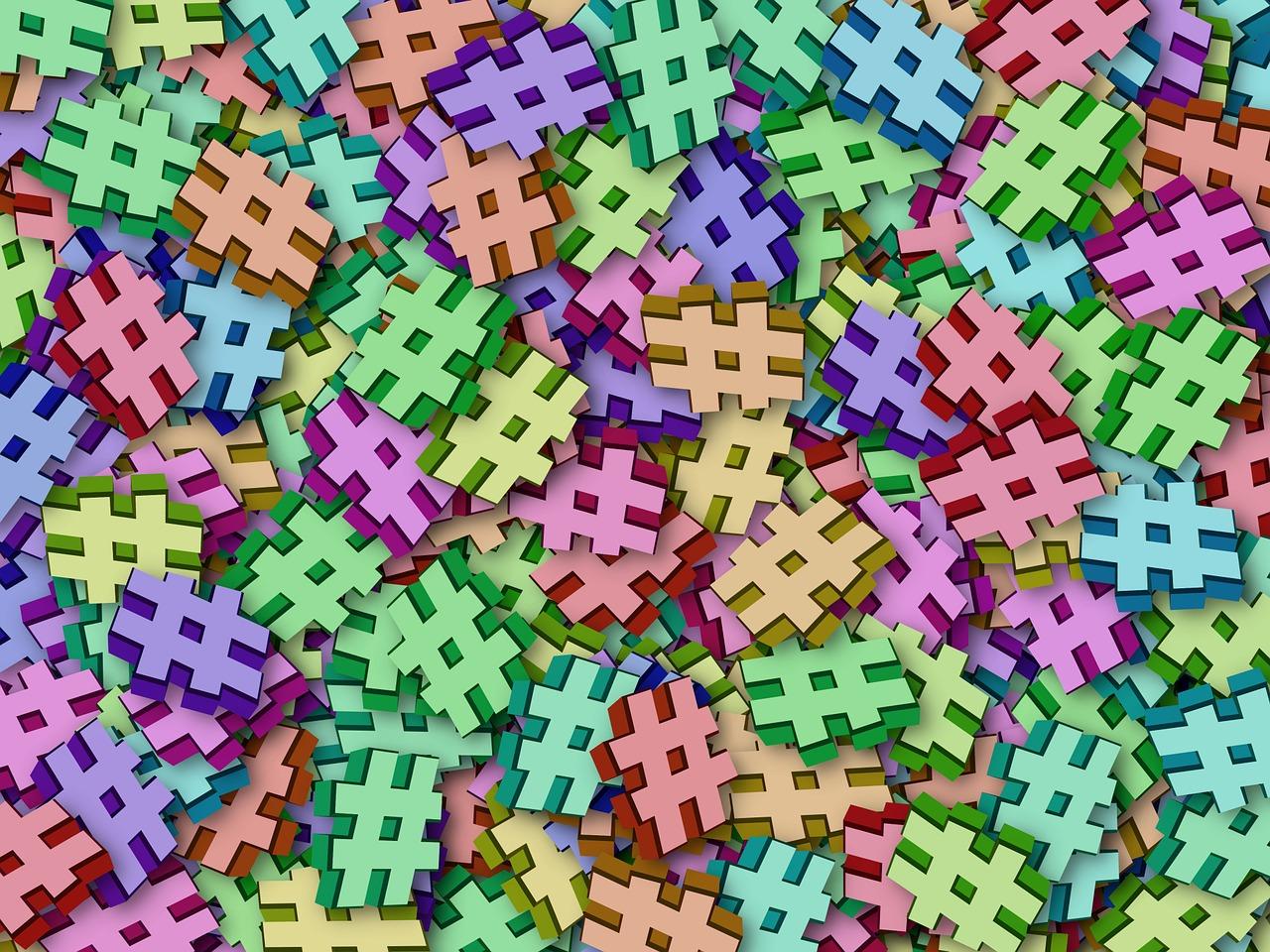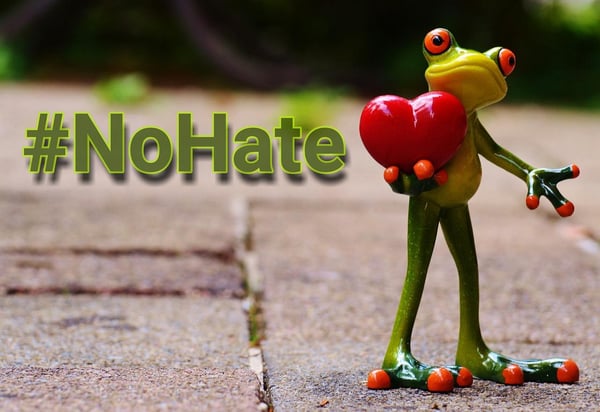October 30, 2019
 by Frank Hamilton / October 30, 2019
by Frank Hamilton / October 30, 2019

Hashtag marketing is a relatively new term.
A few years ago, hashtags were used only to structure content by topic and to make posts more searchable. Today we can hear different opinions about the power of hashtags on social networks. There is a reason to believe that they no longer work, and the focus has shifted to the value of the content – this is partially true.
At the same time, many brands continue to use hashtags for promotion and even develop entire hashtag strategies. Which approach makes sense in the current environment? Do hashtags have power, or has it just become a habit for both brands and users? Let's find it out together.
Let's look at the core social media networks to see how hashtag functionality works, and whether their usefulness has dwindled in the past few years.
The use of hashtags on Facebook is complicated by the fact that the platform has a strict limit on the number of characters that you can use for them. This means that you need to be extremely brief, and try not to lose the essence. To make Facebook hashtags as effective as possible, you need to use one popular hashtag for more coverage, one hashtag that will accurately display the theme of the post, plus your unique brand hashtag. And at the same time, do not forget about strictly limited frameworks. This is a difficult task, but overall feasible.
Twitter is the birthplace of hashtags. Since the posts on Twitter are short, it’s quite convenient to label them by topic with the corresponding hashtags. And this approach has not lost relevance now, so if Facebook hashtags are optional, then Twitter hashtags are a must-have. At least in order not to violate standardly accepted forms and rules.
Linkedin's audience is very specific. Perhaps this is one of the most specific social networks that bring together specialists from various industries, representatives and business owners, and HR managers. Linkedin has a different attitude towards hashtags. Some users use them, while others consider this platform highly specialized and do not see the need for hashtags for their posts. And it’s hard to say which of the approaches is the most correct, as well as how much hashtags are needed in this social network.
But Instagram is the best place for hashtags. All users, without exception, love to use them, because for this platform this is the best way to find the information you need and perhaps the best way to promote, in addition to visual content, of course. Therefore, the answer to the question of whether to use hashtags on Instagram is unambiguous. The answer to the question of whether they are valid for this social media is unambiguous. The answer to the question of whether you can promote your profile using hashtags is clear too. Yes, yes and one more yes.
YouTube hashtags also work pretty well and make your video more visible to users. In addition, it’s very convenient to group videos by topics, assigning them hashtags and forming playlists.
In addition to social networks, you can also use hashtags on your site under your posts. However, here their main function will be to improve the association of site visitors with your brand using hashtags.
So, the concept of hashtag marketing is somewhat exaggerated. The tasks of hashtags in marketing come down to only two goals - this is increasing brand awareness and structuring content.
Unfortunately, this is the maximum that you can squeeze out of hashtags. You cannot use them as tools for increasing sales or the effectiveness of your business. In this context, hashtags do not work. But they work well for interacting with the target audience, improving the association between the brand and the brand hashtag, and are also well suited for attracting custom content marked with a specific hashtag.
As you can see, the potential of hashtags is far from unlimited, and can not be compared with the potential useful content, for example. But if you are sure that you deliver valuable content on social networks, then the hashtag may turn into an additional tool for promotion and attraction. And here's what you need to do to make the hashtags work for your benefit.
You should try to use hashtags as thoughtfully as possible. Using them just because everyone does it this way is like trying to SEO optimize your page for completely random requests and just hoping that sooner or later it will get to the top. So with hashtags, everything works in approximately the same way.
You need to build a core of hashtags that maximally reflect the specifics of the business, plus put yourself in the place of users and think about what queries they can search for your content with.
To find such hashtags you need to look at the most discussed topics on the network and the most popular publications. Plus, it’s necessary to find a way to connect these topics with the specifics of your business and give users hot, but valuable branded content.
Popular hashtags will attract a good share of traffic, but there is one pitfall. Since you aim at all users at once, not all of them are your target audience and your potential subscribers. It’s possible that they will post your post, like, write a comment and leave, so be prepared for this.
A brand hashtag is a tool that can solve the second problem - to increase brand and business recognition. Therefore, here you need to kill several birds with one stone at once.
|
The goal of this action remains unchanged - to make your brand more recognizable and memorable.
If you know that your audience is users for whom English is a second language, then add some hashtags in their native language. For you, this is a trifle, but they will be pleased, and plus you get a little more coverage.
Add additional hashtags in the comments below the post
It is possible to add up to 30 hashtags under each post, however, if you use the opportunity completely, you can spoil the external appeal of the post and create the impression of an attack from spam. Therefore, use only key hashtags under the post itself, and add the rest to the comment. The result in the search results will not be different.
But, the most important thing that you should do is to observe the ideal proportions of the use of hashtags. The ideal strategy is as follows.
Under the post itself, you write up to 10 hashtags. One of them is a branded hashtag, two popular or trending, two high-frequency hashtags relevant to the theme of your business and post, three mid-frequency and two low-hashtags.
If it seems to you that this is not enough, use the comments field and add all the other hashtags there. You can even make a list of universal hashtags that will be suitable for each of your posts, plus add a few more new hashtags to each post to increase the chances of being found.
Since in this article we came to the conclusion that hashtags work best on Instagram, it will be advisable to figure out which hashtags are forbidden, and accordingly, for what types of business, hashtag marketing will either fail, because key requests are blocked, or they will have to come up with tricks to make their content visible.
So, the following types of businesses will encounter difficulties when using hashtags to promote the company on Instagram.
Plus, Instagram prohibits the use of obscene hashtags, hashtags of an illegal, erotic, narcotic nature, hashtags promoting cruelty and violence.

Thus, hashtags cannot be considered a full-fledged marketing tool. Marketing tasks can be solved through high-quality content, smart email newsletter, chatbots, personalization, social media strategy, and an improved sales funnel. Hashtags are nothing more than an addition to all this.
Globally, you can do without them; however, the unspoken rules of some social networks oblige you to use them. Therefore, the best thing you can do is work on a holistic marketing strategy, improve your user experience, conduct analysis, collect data about users and their expectations from your brand, but do not make the hashtag strategy your priority.
As previously said, this is nothing more than an addition to a much more comprehensive marketing effort, so it’s better to focus on the essence of your marketing and use hashtags as assistants.
Whether you're getting your branding game on via LinkedIn or just trying to social-share your cute cat's picture, you're bound to use and encounter hashtags on a daily basis. To make tracking all of the hundreds of hashtags you see daily, try out hashtag software to automate the process for you.
Frank Hamilton has been working as a translator at translation service TheWordPoint. He is a professional writing expert in such topics as blogging, digital marketing, and self-education. He also loves traveling and speaks Spanish, French, German, and English.
The words "typeface” and “font” don’t look the same. They don’t sound the same. They don’t...
 by Daniella Alscher
by Daniella Alscher
In 2007, when the pound sign was first used by Chris Messina as a metadata tag to find topics...
 by Val Razo
by Val Razo
Starting an account-based marketing program from scratch can sound intimidating. The good news...
 by Joel Garcia
by Joel Garcia
The words "typeface” and “font” don’t look the same. They don’t sound the same. They don’t...
 by Daniella Alscher
by Daniella Alscher
In 2007, when the pound sign was first used by Chris Messina as a metadata tag to find topics...
 by Val Razo
by Val Razo


